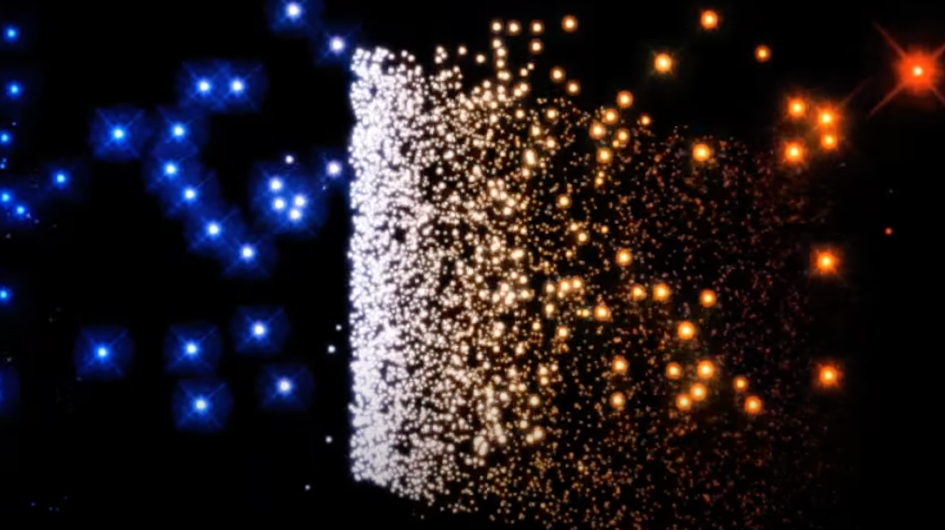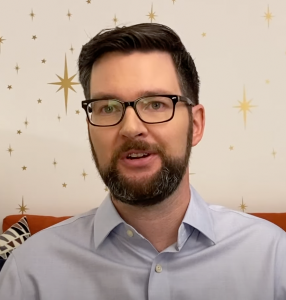Age-Dating the Stars to Crack the Origins of Our Universe


Jason Curtis came to Columbia four years ago as a postdoc, drawn to the eclectic mix of students and scientists in Marcel Agüeros’s astronomy lab. Now an associate research scientist, Curtis works with Agüeros and Ruth Angus, an astronomer at the American Museum of Natural History (AMNH), to put ages on the millions of stars in the Milky Way to understand how our galaxy evolved. For the past two years, Curtis has worked with NYC high-school students through AMNH’s Science Research Mentoring Program, an after school program that lets students conduct original scientific research. Many of the students come from underrepresented groups in science and engineering. It’s a continuation of work Curtis did as a postdoc, helping college graduates prepare for PhD programs through Columbia’s Bridge Program. This interview has been edited for clarity and length.
Q. What do you study?
A. I work on a technique to measure the ages of stars based on how fast they spin. We call this gyrochronology, or timekeeping through rotation. All stars are born spinning, and they slow down over time. A newborn star might spin every few hours, or every few days. Our own relatively old star, the Sun, spins once every 26 days.
Q. Why is it important to know the ages of stars?
A. When you look up in the sky, you may think stars are eternal. But stars live, die, and evolve during their lifetimes. The planets that form around them also change size, atmospheres, and orbits, and so does our galaxy, over billions of years. It’s hard for astronomers to put all this together without being able to assign ages to the stars. It’s like trying to understand evolution from a set of fossils in a museum without putting them in chronological order. It would be a mess.
Q. How has the data gathering process changed?
A. Twenty years ago you had to take images continuously from ground-based telescopes to measure the rotation period of a star. You could observe all night, but not during the day. You also had to go to a telescope for months at a time. Day in and day out, you measured how the star gets brighter and dimmer due to star spots and its surface rotating in and out of view.
That all changed when NASA launched its Kepler spacecraft. We now have four years of nearly uninterrupted sequences of brightness fluctuations near the Cygnus constellation to measure how fast the stars there are spinning. NASA’s TESS satellite is collecting similar data elsewhere, and the European Space Agency’s Gaia satellite has been mapping the precise locations and motions of a billion stars in our galaxy. We use Gaia to identify groupings of stars that are moving together in the galaxy. We assume they were born together and live together in a cluster. Ten, twenty, years ago it might have taken decades to get enough observations. But now all of these data are on the internet — for free.
Q. How has computing and the internet changed how astronomy is done?
A. Today my high school students can immediately download data from NASA’s TESS satellite, upload them into Google Colab, and use Python to extract our measurements and estimate how fast the stars spin so that we can build a model for age-dating all the stars in the sky. TESS data is provided to the entire world for free. Google’s computational resources are also free. That eliminates a lot of barriers, including for high school students.
Q. What barriers remain?
A. Knowing how to get started. We’re developing web-based tutorials, or notebooks, in Python, so anyone can download our notebooks and follow along exactly the work that we’re doing, replicate it, and learn for themselves how to conduct cutting-edge astrophysics research.
Q. What are your high school students working on in the lab with you?
A: We’re taking TESS satellite data and measuring the brightness of the stars we care about and stringing the data together to make a light curve that shows how a star’s brightness fluctuates with its rotation. With thousands of stars to study, we need a classification tool that lets us interact with these light curve data to measure rotation periods and categorize them. My students built such a tool, and have used it to study a 400 million-year cluster called M39. It fills a critical gap in the age distribution of the clusters that we have.
Q. Why is categorizing star light curves so important?
A. We can’t possibly muster enough citizen scientists to look through light curves for millions of stars so machine-learning algorithms will be essential. But they can only be built on careful measurements taken by people. The tool that my high school students built gives us a way to efficiently classify light curves to train the algorithms.
AMNH interns who worked with Curtis in 2021 were Osman Ali, Sofia Lawsky, and Yessenia Montgomery; Interns in 2020 were Angeli Pante, Isabella Fraczek, and Linus Brooks.